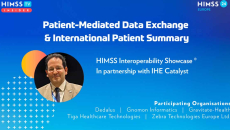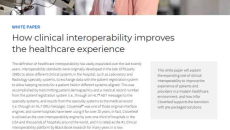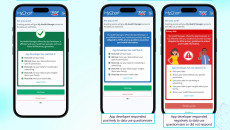Interoperability
The company announced on Patch Tuesday that among 90 CVEs for August – including six zero-day exploits – the Azure Connected Machine Agent had a critical elevation of privilege vulnerability.
SPONSORED
A demonstration at the HIMSS24 Europe Interoperability Showcase highlighted how the eHealthPass app and the International Patient Summary can help traveling Europeans quickly share their medical records to access needed care.
Healthcare organizations will need to go through a three-step process to achieve post-quantum safety: Discover, observe and transform, says Scott Crowder, vice president of IBM's quantum-safe adoption team.
Interoperability standards were originally developed in the late 1970s and early 1980s to allow different clinical systems within hospitals to exchange data with the patient registration system. Infor Cloverleaf®, one of the original interface engines in use then, is still the core interoperability engine for more than one-third of U.S. hospitals.
A prehospital health information exchange in Michigan that provides bidirectional interoperability will bridge ambulatory data gaps and enhance care coordination en route to the hospital and during post-discharge care transitions.
Lisa Hanselmann, Inria's European project manager, talks about how the FLUTE project is building a GDPR-compliant federated learning platform to allow researchers to share both real-world and synthetic data on prostate cancer.
As Italy develops a national digital strategy requiring healthcare data exchange across all 20 of its regions, Marco Foracchia, AUSL Reggio Emilia CIO, recommends first steps for hospitals that haven't yet begun digital transformation.
Patients can now release all their electronic health data to apps of their choice through TEFCA's record location services, and understand if the data exchange they authorize is protected under HIPAA.
SPONSORED
Learn from hospital executives who are future-proofing the care environment for patients and providers.
With help from Oracle, Innovaccer and Salesforce, the South Florida provider is scoring big population health wins, including a 7% increase in coding gap closure rate and a 17% increase in annual wellness visit completion rates.











